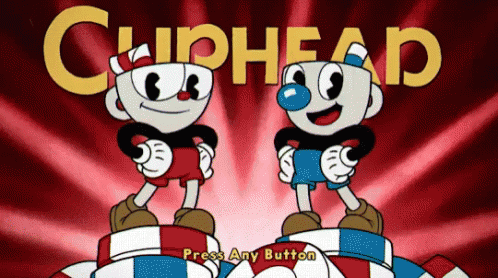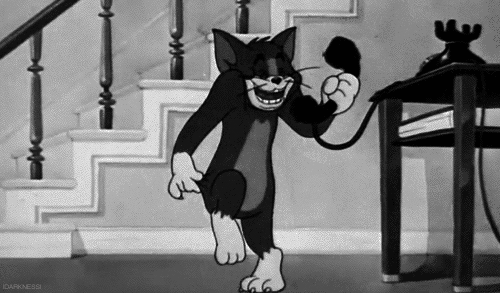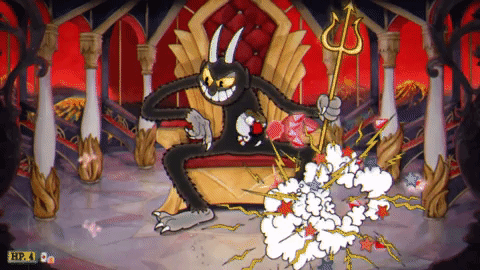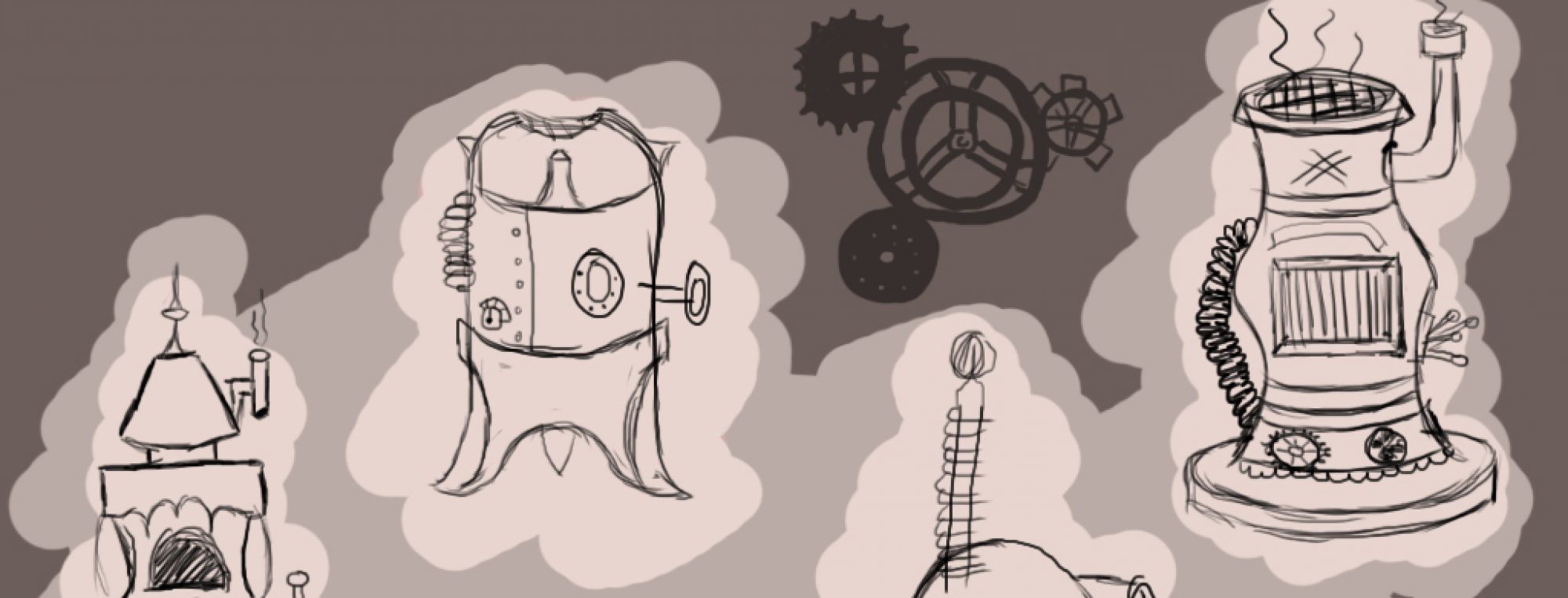Although never having played the game myself, I have watched others master it and have watched different interpretations and reactions to the game as well. ‘Cuphead’ was the cutting-edge game of 2017, having received amazing reviews and public reception for it’s innovative 1930s cartoon-style art, animation, music/SFX and every other detail.

Before I talk about the influences game creators Chad and Jared Moldenhauer used within the ‘Cuphead’, I feel like it’s important to give a bit of insight into the art style itself. As seen from the GIF of the title screen above, ‘Cuphead’ immediately gives the impression of depression-era style cartoonism of 1930s America. Having grown up on watching and loving older cartoons such as old ‘Looney Tunes’, ‘Tom & Jerry’ and ‘Mickey Mouse’, it’s without a doubt before you even start the game how this will be heavily influenced by cartoons of this time. Whereas many games of today are trying to steer away from the clunkiness or outdated thick outlines and 2D animation, ‘Cuphead’ brings it back in a very stylised fashion, which I admire.
 [Puss n’ Booty – 1943 Looney Tunes Opening Title]
[Puss n’ Booty – 1943 Looney Tunes Opening Title]
Although the image above of the Looney Tunes title card isn’t a GIF, you can still tell by the screenshot that the Cuphead start screen and the Looney Tunes into both share very, very similar qualities, just like many cartoons of that era. They both share film grain (where ‘Cuphead’s’ film grain is clearly artificial for authenticity throughout the game), heavy uses of shading in the background, and characters with thick outlines. Another thing I’ve also noticed is that vintage American cartoons all share the common feature of very bold text wherever they’re placed, which are very easy-to-read fonts as well.
 [A 1930s episode of Tom & Jerry, which I was unable to find the name of]
[A 1930s episode of Tom & Jerry, which I was unable to find the name of] [Cagney Carnation boss battle in ‘Cuphead’]
[Cagney Carnation boss battle in ‘Cuphead’]
Just by making my own observation, I’d always be able to identify the main difference between a vintage cartoon and a modern (early 00s at the time) cartoon by looking at the background (see the two GIFs above). Obviously, I’ve gotten older and more aware of the advancements in technology since then. I realised that cartoons I used to watch from the 1930s-1960s would have been hand drawn, frame by frame, which as you can imagine would be pretty tiring after the first 5 frames in itself. I’d never questioned the reason why the background on older cartoons were much more detailed and much more static than the newer generation of cartoons. Looking back now with a clearer understanding, it’s easy to explain this as a way where the background appears more detailed because the thing(s) being animated has little to no detail on it whatsoever, to save the animator time when the entire cartoon is being hand-drawn.
The fact that Cuphead replicates this style in the game is amazing; it really keeps in time with the nostalgic, old-fashioned theme it brings forward throughout. On top of that, I read that this was hand-drawn and animated frame by frame just like classic cartoons, which just makes it feel all the more authentic.

When talking about the Moldenhauer brothers’ influences on the entire game, they drew it from cartoons from the likes of Paramount Pictures to the likes of the lesser known Fleisher Studio projects in order to create new characters from long lost aesthetics.

Cala Maria seems to be a flirty and vivacious being who seems to have some type of interest in Cuphead and Mugman, as seen in her intro where she makes a sweet “yoo-hoo!” sound while fluttering her eyelashes and making a pose. According to the Moldenhauers, this character has influences from both Betty Boop and a mermaid character from the Super Nintendo game ‘Gokujou Parodius’.

With the reference to Betty Boop, an iconic cartoon character from the depression-era, you can really draw similarities in the art style. For this time period, there seemed to be a lot of attention in hyper-feminising women characters. In this instance, both Betty Boop and Cala Maria have a really emphasised feminine figure, as well as heavy make up. I feel like in ‘Cuphead’, however, these features of old-style cartoons are used tastefully. Their body languages are both very sleek with a lot of curvature to them, too, as Betty boop (in this GIF) sways in a figure eight, where Cala shakes her hips in a similar way.

Much like many depictions of Satan, the Devil is a cruel and malevolent being that grants deals to anyone who asks in exchange for their soul and servitude. He can be a deceitful trickster as well, turning Cuphead and Mugman into his slaves despite agreeing to spare them if they hand over all of the soul contracts. He also lacks empathy towards everyone, including his own minions, as evident by him calling King Dice a “good-for-nothing lackey” after he has been beaten.
The Devil’s main trait is that he is incredibly prideful of himself, believing he’ll always win in the end as he brushes King Dice off when the latter tries to warn him about the brothers becoming stronger.
The Devil from ‘Cuphead’ was majorly inspired by an old Disney (Silly Symphony) cartoon called ‘Hell’s Bells’ released in 1929. The very clear observation to make here would be that both of the devils appear as tall, black creatures with details of a ram. In cartoons of this era, artists seemed to always draw fur as jagged, spikey slopes around the outline of the character, which is also reflected in both the game and in the cartoon I’ve provided the link to. As well as visually, the character both display very similar personalities; very prideful and lacking empathy. Seeing that in 1920s/30s America religion played a greater part than what it does in the modern day, the fact that the devil has such a similar personality to the older style could relate to that time in America in a way, just to keep up with the art style.
Bibliography
- https://www.ceros.com/originals/comparing-cuphead-to-classic-cartoons/
- http://cuphead.wikia.com/wiki/Cala_Maria
- https://www.giantbomb.com/articles/chad-and-jared-moldenhauers-top-10-games-of-2017/1100-5676/
- http://cuphead.wikia.com/wiki/The_Devil
- https://en.wikipedia.org/wiki/Hell%27s_Bells_(1929_film)
